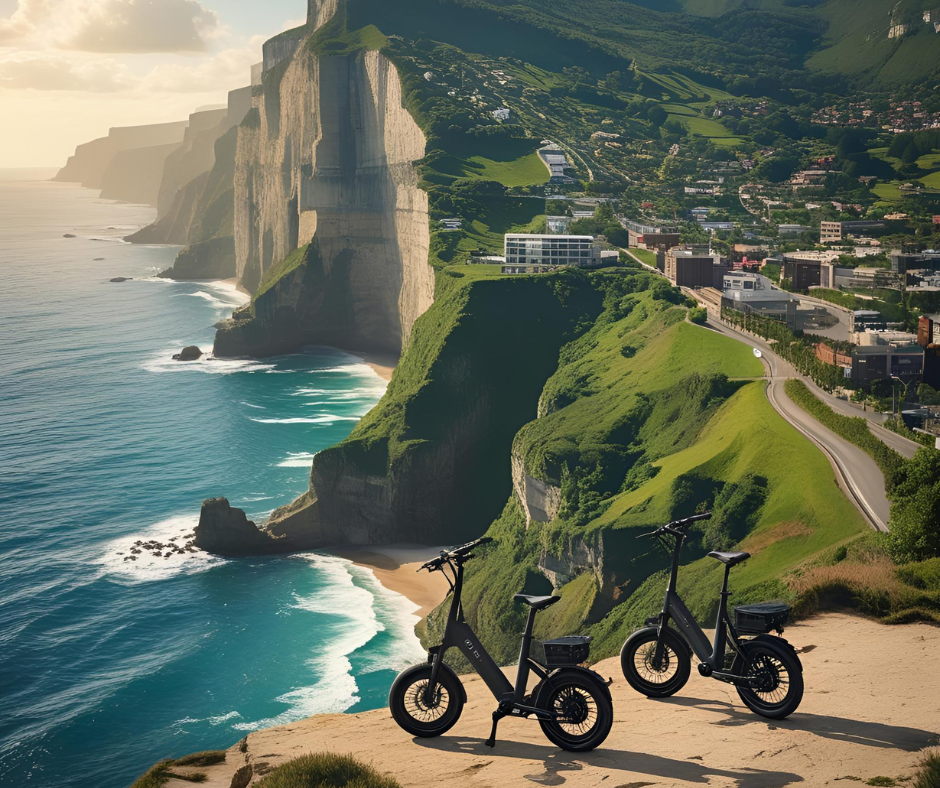In recent years, the buzz around ebike Singapore trends has exploded as more riders recognize how an ebike offers the perfect blend of tradition and tech. What began as a quiet revolution is now accelerating into a mainstream movement, reshaping how we think about mobility, sustainability, and lifestyle. No longer just a futuristic novelty or a commuter’s alternative, the ebike is rapidly gaining ground across urban streets, rugged trails, and everything in between.
From seasoned cyclists to casual riders, the community is starting to feel the pulse of change. The question now isn’t if ebikes will take over the cycling world—it’s how and when. This blog dives deep into the shift, exploring why ebikes are here to stay, how they’re transforming the ride, and what it means for the future of biking.
1. A New Generation of Riders
One of the most notable impacts of the ebike movement is its ability to bring new faces into the cycling community. People who once felt intimidated by steep hills or long commutes now find empowerment through assisted pedaling. An ebike removes the physical barriers that often deter potential cyclists—whether that’s age, health limitations, or fitness level.
This inclusivity isn’t just good for individuals—it’s great for the community. A broader, more diverse group of riders leads to more conversations, more shared experiences, and a richer biking culture. Riders no longer have to choose between performance and comfort. With an ebike, you can enjoy both.
2. Practicality Meets Passion
Cycling has always had a place in daily routines—whether as a commute, an exercise regimen, or a leisure activity. But the rise of the ebike has made it a more practical tool than ever before. Suddenly, cross-town commutes, grocery runs, and errand dashes are faster, easier, and sweat-free.
Urban dwellers especially benefit from this versatility. An ebike can maneuver through traffic, skip parking fees, and avoid crowded buses or MRTs. Riders who used to rely solely on cars or public transport now see the ebike as their go-to vehicle for everything from weekday routines to weekend adventures.
This shift isn’t purely utilitarian either. The passion of cycling lives on—with a twist. The assisted nature of an ebike allows riders to push farther and discover new areas, extending their love for the road or trail beyond the limitations of a traditional ride.
3. Eco-Friendly Is the New Normal
Sustainability has become a central theme in modern transportation—and the ebike plays a leading role. With zero emissions and minimal energy consumption, ebikes provide a genuinely green alternative to cars and motorcycles.
As cities push toward net-zero emissions and car-lite policies, the ebike is increasingly seen as a viable solution. Governments and planners are investing in infrastructure—like bike lanes, shared paths, and parking facilities—to accommodate this shift. In many areas, incentives like rebates, grants, and tax deductions for ebike purchases are further encouraging adoption.
By choosing an ebike, riders don’t just save time and money—they actively contribute to a cleaner, quieter, and more sustainable city.
4. The Tech Edge: Why Ebikes Keep Getting Better
Let’s talk tech. Today’s ebike is nothing like the clunky models of a decade ago. With sleek designs, smart integration, and advanced battery systems, ebikes have evolved into performance machines. Whether it’s a torque sensor that adjusts assistance based on pedal power or an app-connected dashboard that monitors your route and battery levels, modern ebikes are built for a seamless experience.
Battery life has improved significantly, with many models offering 70–100 km on a single charge. Charging times are shorter, and removable batteries make things even more convenient for urban riders. These upgrades aren’t just cosmetic—they’re game changers that make ebikes more reliable and appealing than ever before.
This innovation isn’t slowing down. With constant R&D investment, the next generation of ebike models is expected to bring even more improvements—from lighter frames to solar-assisted charging systems.
5. A Social Shift: Redefining What It Means to Be a Cyclist
Cycling has long carried cultural weight. Hardcore roadies, fixie enthusiasts, and mountain bikers all carry their own ethos and pride. But the rise of the ebike is redefining the social fabric of cycling.
Instead of being seen as a shortcut or “cheating,” riding an ebike is increasingly viewed as smart, efficient, and even stylish. As more influencers, celebrities, and high-performance athletes embrace ebikes, the stigma is falling away.
Bike clubs, group rides, and even racing leagues are beginning to include ebike categories, opening up new ways for riders to connect and compete. The new cyclist isn’t just one type—they’re everyone.
6. Health and Wellness: A New Approach to Fitness
While purists might argue that an electric bike reduces physical effort, studies show that riders still get substantial exercise. In fact, many people end up riding more frequently and for longer durations with an ebike than they would with a traditional bike.
For people recovering from injury, dealing with joint pain, or simply getting started on a wellness journey, the ebike provides a low-impact way to stay active. Mental health also benefits, with fresh air, freedom, and outdoor time working wonders for stress and anxiety levels.
So yes, your heart rate might be a little lower—but the health benefits of consistent, joyful movement on an ebike are undeniable.
7. Economic Incentives: Smart Money Moves
Let’s talk dollars and sense. While the upfront cost of an electric bike might be higher than a traditional bike, the long-term savings are significant. Think about fuel, maintenance, parking, and even gym memberships. When an ebike becomes your daily mode of transport and your weekend workout, the value adds up fast.
In many countries and cities, subsidies and rebates make electric bikes even more affordable. In Singapore, government support for sustainable transport options has created a welcoming environment for electric bike adoption, helping people transition from cars and motorcycles with ease.
When you crunch the numbers, the electric bike wins—both for your budget and your lifestyle.
8. Business and Delivery: The Ebike Advantage
The gig economy has found a secret weapon in the electric bike. Food delivery, courier services, and even postal routes are increasingly switching to electric bikes for their efficiency and cost-effectiveness. Riders can cover more ground with less fatigue, and businesses can lower operational costs while presenting a green image.
Startups and logistics companies are also investing in custom electric bike fleets. With smart tracking, secure cargo compartments, and modular designs, these professional electric bikes are reshaping last-mile delivery in cities across the globe.
The rise of the electric bike isn’t just changing how we ride—it’s redefining how we work.
9. Future Cities: Built for Ebikes
Urban planning is adapting to the rise of the electric bike. Cities around the world are rethinking their infrastructure, dedicating more space to two-wheel travel. Wider bike lanes, electric bike charging stations, and secure parking zones are becoming the norm rather than the exception.
Singapore, in particular, has made great strides in creating a safe and connected cycling network, encouraging more people to embrace the electric bike as a legitimate alternative to driving. As cities continue to grow, congestion and pollution concerns will only accelerate this momentum.
The future city isn’t built around the car. It’s built around the electric bike.
10. Ebikes as Cultural Icons
Like the smartphone or electric car, the electric bike is becoming more than just a product—it’s a symbol. It represents freedom, innovation, and a conscious way of living. Riders are proud to show off their setups, customize their gear, and share their journeys online.
The visual appeal of modern electric bikes also contributes to their cultural cachet. Sleek, minimalist frames, integrated lights, and designer accessories make electric bikes as Instagram-worthy as they are road-ready.
This cultural evolution is powerful. It turns a mode of transport into a movement—and a movement into a revolution.
Conclusion: The Takeover Has Already Begun
The cycling community isn’t being replaced—it’s being redefined. The electric bike isn’t here to take away from the tradition of biking but to enhance it. With growing adoption rates, advancing technology, supportive infrastructure, and an ever-expanding community, electric bikes are no longer the future—they’re the now.
Whether you’re a daily commuter, a weekend explorer, or someone just rediscovering the joy of riding, there’s a place for you in the electric bike era. It’s not about giving up pedals. It’s about adding power to your passion.
So the next time you see someone cruising by with ease, don’t be surprised—it’s just the electric bike community, growing stronger with every ride.





